In this architecture class, students tackle gentrification in Boston’s Chinatown
In ARCH5115: Anti-Displacement Studio, Lily Song’s students work with community leaders on ideas to keep the neighborhood’s longtime residents and small businesses in place amid development and gentrification.
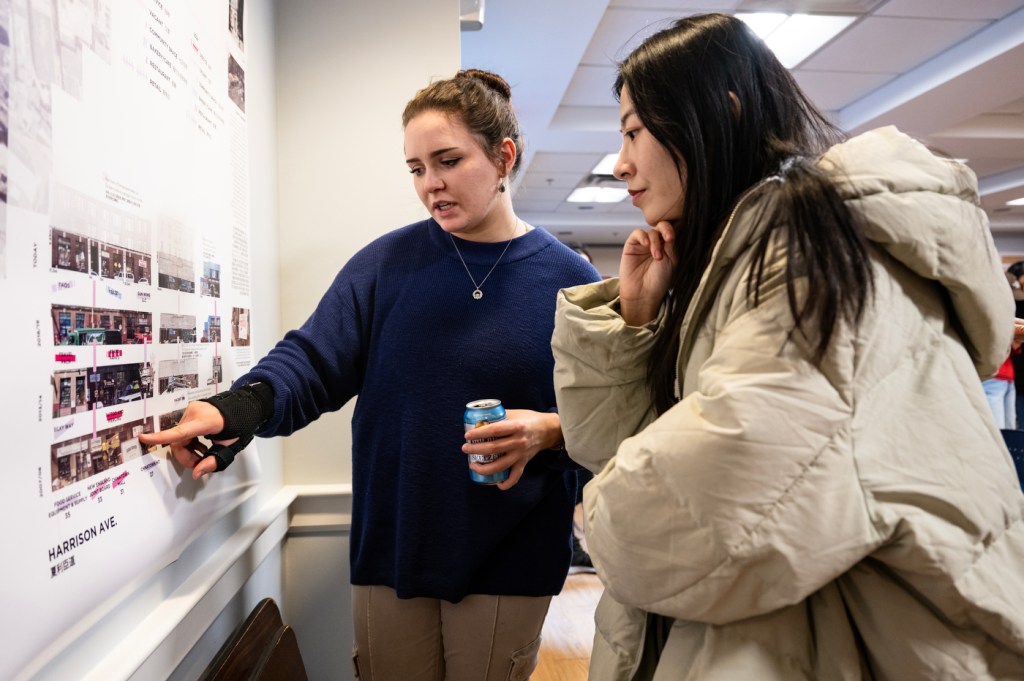
The site of what is now the Metropolitan apartment complex on Oak Street in Boston has been at the heart of community life in the city’s Chinatown neighborhood for nearly a century. A hub for the city’s immigrants, it was a seat of activism in the 1950s and ’60s against large-scale urban renewal projects that wiped out sections of many immigrant neighborhoods across the city.
“This building exists because of the community fighting back,” says Suzanne Lee, a longtime resident and organizer. When the first interstate highway through Boston, I-93, was set to be built in the late 1950s and early ’60s, Chinatown organizers negotiated to re-route the highway in order to save key buildings.
“They were going to build a taxi [depot] here. We’ve been dealing with this for years,” Lee says.
She’s standing in the Metropolitan’s ground floor common room in mid-December, where a group of Northeastern University architecture students are mingling with a crowd of residents, Boston government officials, and urban planning and development professionals about another existential threat: gentrification.
The students are members of ARCH 5115: Anti-Displacement Studio, assistant professor Lily Song’s upper level architecture course. The students’ final projects for the class, affixed on poster boards around the room, are in-depth, data-heavy visual presentations focused on different ways immigrant communities in North America have responded to the threat of being priced out or removed from their neighborhoods.
“How do we sustain Chinatown being a Chinatown that’s not overrun by chain restaurants and stores, but businesses that can serve a sustainable and thriving community, both for people living there and working there?” Lee asks, articulating the central question of both the class and the afternoon.
A partnership with the Chinatown Community Land Trust, ARCH 5115 is devoted to the history and future of the historic neighborhood, long a working-class enclave for both the city’s Chinese American population and for immigrants of nearly every global background.
“Chinatown used to be very mixed,” says Song, whose research interests lie at the intersection of urban planning and community participation. “Not just Chinese, but Lebanese, Syrian, Irish and Jewish residents — a really diverse working class.”
The true scope of the class echoes that broad diversity. Though the real-world conversations and history lessons are Chinatown-specific, it’s really a course about preserving the rich traditions and history that make cities across the U.S. unique, while ensuring their economic viability. In recent years, Chinatown has proven popular with developers and middle-class newcomers to Boston, thanks to its proximity to the city’s business and financial districts and easy access to transportation.
But as luxury high-rises and young professionals have moved in, rents have skyrocketed, threatening the historic neighborhood’s longtime locals and small businesses. Currently, median monthly rent in the Chinatown leather district neighborhood is $3,615 — nearly 83% higher than the national average. Some possible solutions have included community-owned corporate spaces, legacy small business grants or partnerships with large area institutions, like universities and hospital networks.
“Architecture can be a vehicle for people to enact the values they want to see in the world,” Song says. “I try to really push my students to find practical, grounded examples of how to make change in the built environment.”
Song has been teaching the studio since she arrived at Northeastern in 2021. It’s meant for architecture majors toward the end of their undergraduate study, and the broad reach of the syllabus draws students with a variety of career aspirations, from urban planning and nonprofit work to real estate development.
This is unique in that we’ve been able to interact with the community,” says Caroline Willis, a fifth-year architecture major. “We’ve been out almost every class, meeting people, hearing people’s stories.”
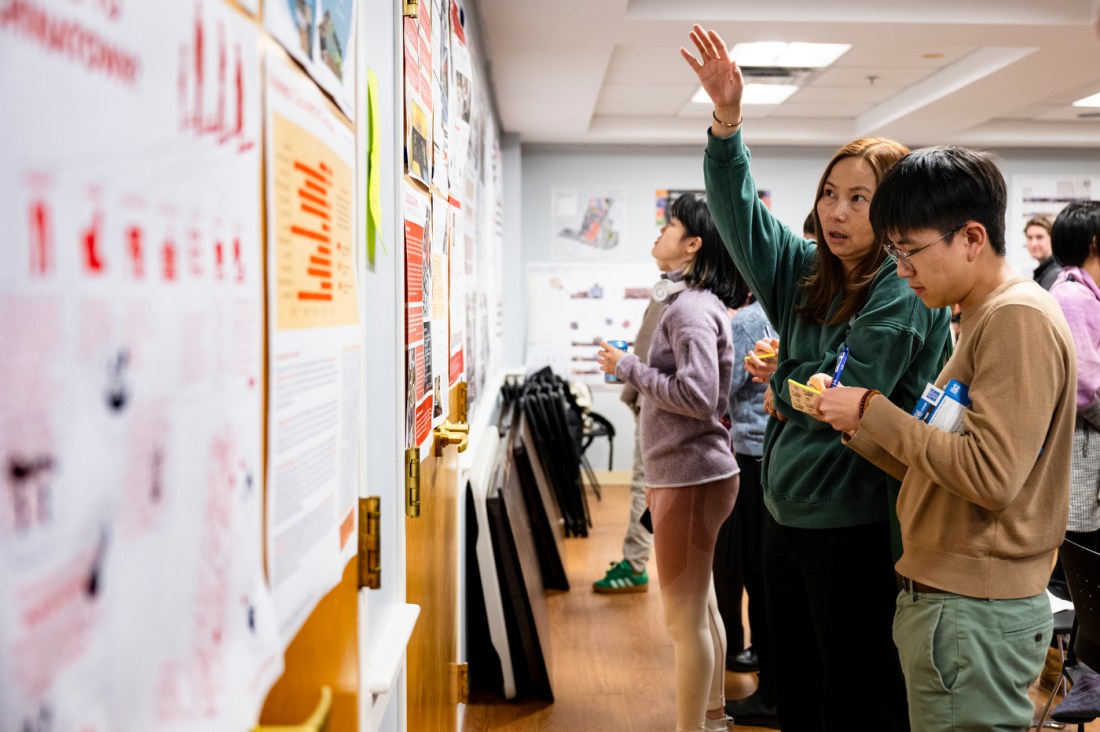
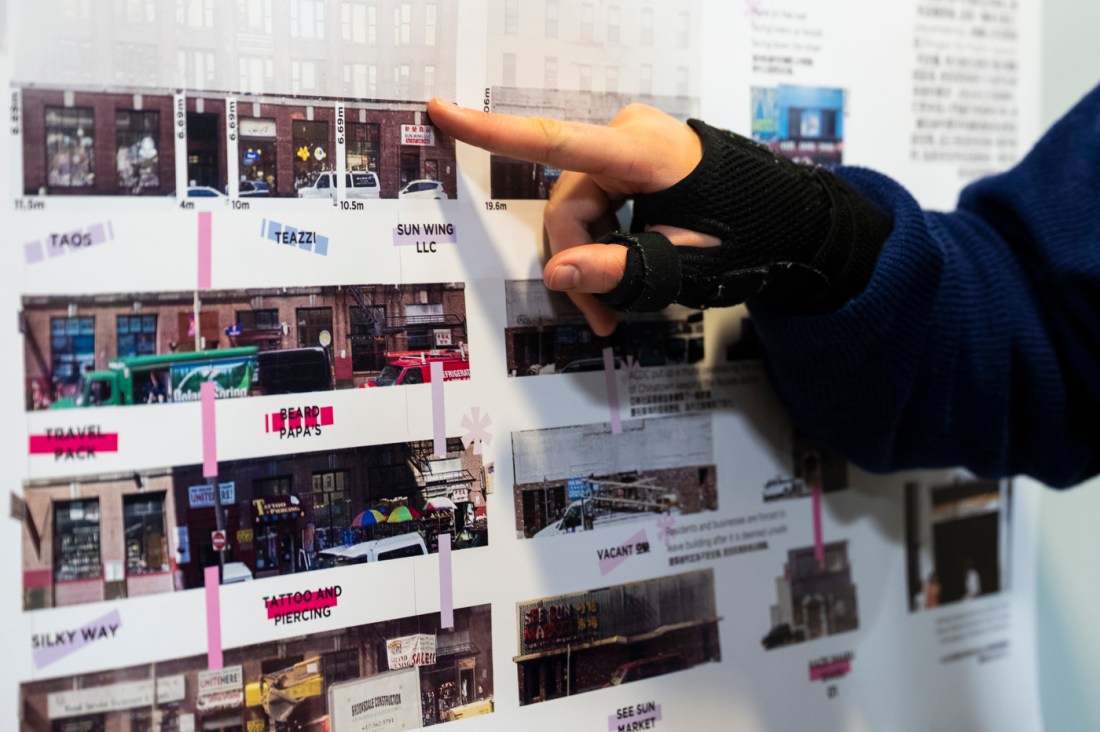
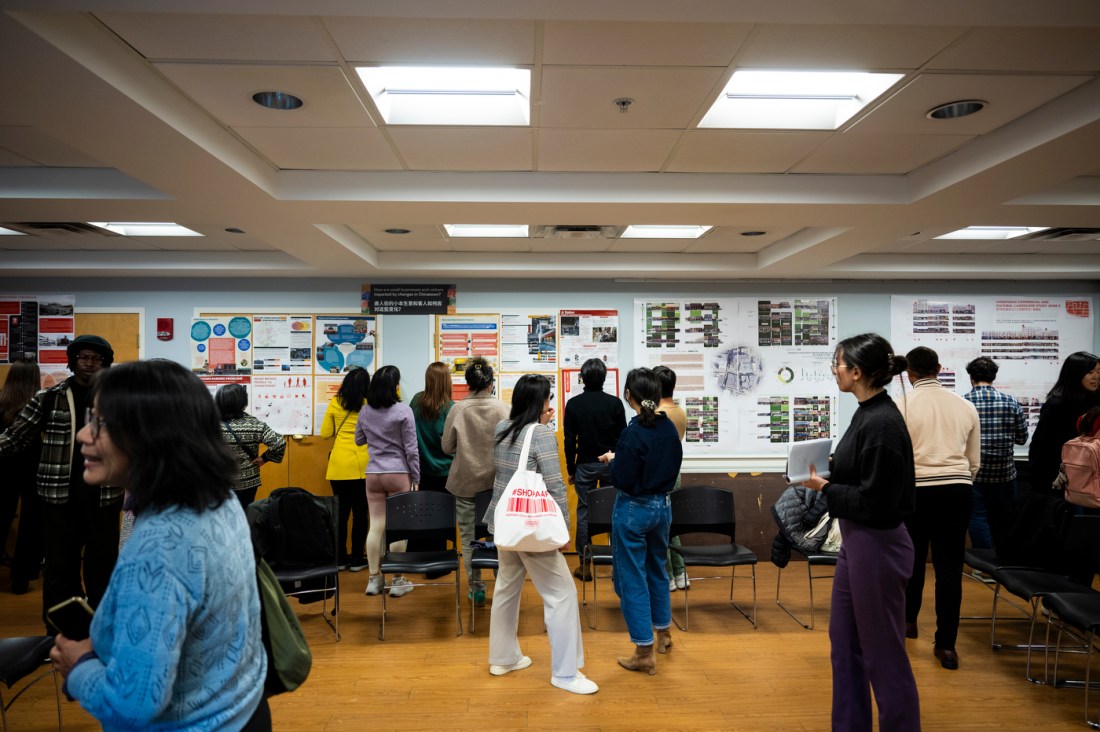
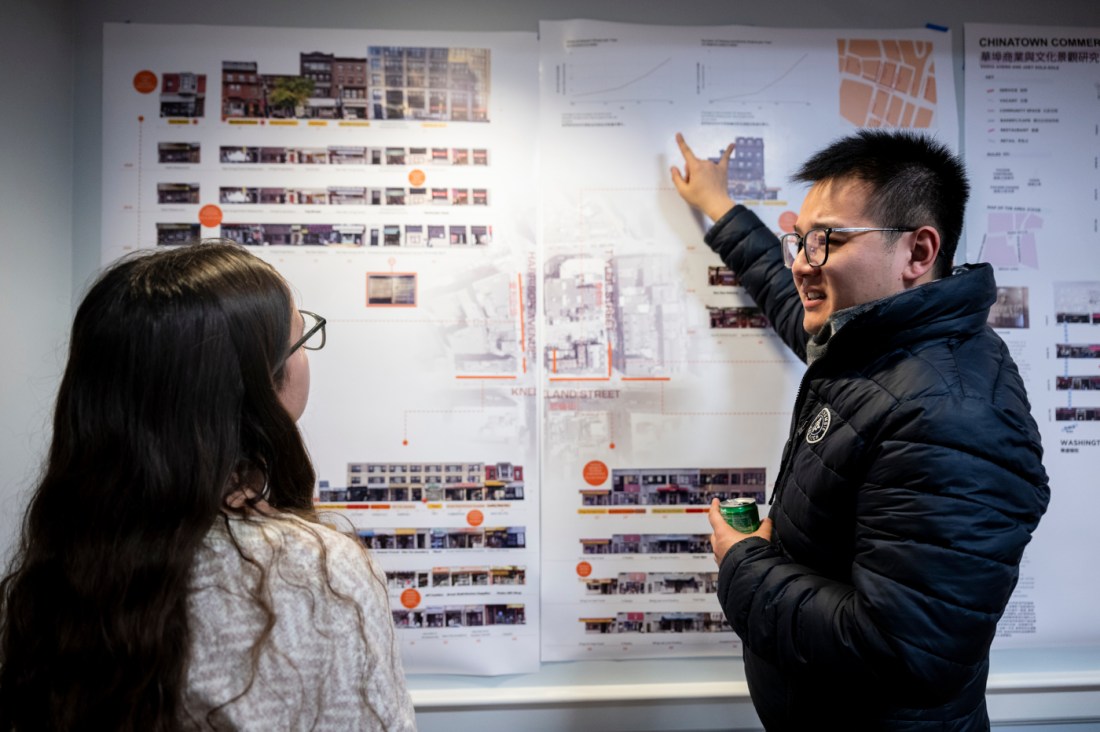
For her, she says, it has reframed the field from one of siloed ideas and design to one plugged into the wider world. “How can we, as architects, learn from people?” she asks. “How do they need us? In our traditional studios, we’ve done a lot of projects that are our own ideas. How can we make theirs our own?”
Glory Ramey, another fifth-year student and Willis’ partner for their presentation, agrees. For their project the pair did a survey on the Chinatown block consisting of Hudson Street, Tyler Street and Beach Street. They zeroed in on how a community commercial ownership model might work for some of the area’s business, including a nearby sushi restaurant.
“A lot of us recently came back from co-op, and working in the field is a huge, huge part of architecture,” Ramey says. “This is a really good way of bringing in that real-world work experience.
Editor’s Picks
The ARCH 5115 semester is roughly demarcated by three exercises. Students spend the first learning about how displacement happens through history — reading, watching documentaries and synthesizing related statistical trends into maps and diagrams.
“These students are not necessarily coming from families that have struggled with these same challenges, so there’s a lot of learning to do,” Song says. “They create some beautiful maps.”
For the second, the class gets a sense of the visual character of the neighborhood. Working in pairs, “they photograph, collage and analyze storefronts, trying to call out what makes Chinatown Chinatown,” Song says.
The third brings the class into the present day, and “trying to understand how Chinatown businesses and visitors are experiencing changes on the ground,” according to Song. This section involves a lot of community interaction, including the event this afternoon. Students are evaluated, in part, on how actively they respond to it.
“Participation — how they show up for every exercise — is big,” Song says.
“They get feedback [on their projects] from our community partners. Are they listening? Are they receiving and incorporating it? Are they revising? I have to say, the students were so good on that front.”
To conclude the afternoon event at the Metropolitan, the assembled guests sit for a group discussion on the students’ presentations. Some speakers noted the tension between progress and preserving traditional cultural values, as reflected in things like chain grocery stores entering Chinatown. Others wearily reflected on how long its senior residents have been navigating these kinds of shifts.
But the consensus was that preserving Chinatown’s unique, historic character while helping it thrive was an ideal worth the work. For Jacob Nonzesky, a fifth-year architecture student, the class illustrated that those two objectives don’t necessarily have to be mutually exclusive.
“I’m interested in real estate development, and this shows how it can be leveraged to not displace people,” he says. “A lot of times it’s profit-taking. It’s not for the betterment of the community. But you can help the people who already live in a community while also improving the overall socioeconomic situation.”











